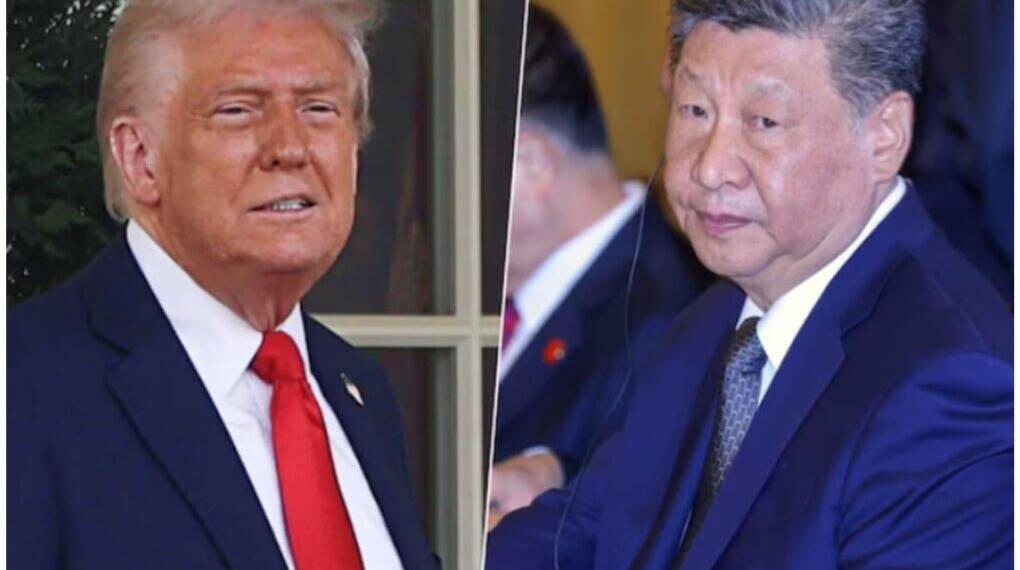In a development that could reshape global economic alliances, a leaked document has reportedly unveiled the ultimate goal behind former U.S. President Donald Trump’s trade war: to compel the European Union (EU) to make a decisive choice between Washington and Beijing. The revelation sheds light on the deeper geopolitical motives driving Trump’s hardline policies toward China and the pressure tactics directed at America’s traditional allies in Europe.
According to reports circulating among senior officials in Ireland and the broader EU, the leaked paper outlines an aggressive U.S. strategy designed to divide global trade blocs and isolate China economically. The document claims Trump’s administration viewed the transatlantic relationship not merely as a partnership but as a tool to enforce America’s economic dominance in a multipolar world where China’s influence is rapidly expanding.
The Trade War Beyond Tariffs: A Strategic Power Play
While Trump’s trade war was widely seen as an effort to protect American jobs and reduce the trade deficit, this document suggests it was also a calculated move in a larger power game — one aimed at forcing the EU to align fully with Washington’s anti-China agenda.
Since 2018, Trump’s administration had imposed tariffs on hundreds of billions of dollars’ worth of Chinese goods, citing unfair trade practices, intellectual property theft, and national security threats. However, the newly revealed documents indicate that the broader objective was to weaken Beijing’s global supply chain influence and prevent Europe from drifting closer to China’s Belt and Road Initiative (BRI).
By creating economic turbulence and uncertainty, the U.S. sought to compel European leaders to choose sides — framing the issue as a binary choice between “democracy and autocracy,” with trade as the deciding weapon.
EU’s Dilemma: Economic Dependence vs. Political Pressure
For the European Union, this revelation puts into perspective the mounting pressure it faced from Washington during Trump’s presidency. The EU, which has deep economic ties with both the U.S. and China, found itself trapped in a high-stakes geopolitical tug-of-war.
China is one of Europe’s largest trading partners, with annual trade exceeding $800 billion. Many EU member states, including Germany, France, and Italy, rely heavily on Chinese manufacturing and investment. At the same time, Europe’s security architecture remains deeply anchored in NATO and the U.S.-led transatlantic alliance.
Trump’s “America First” policies, however, repeatedly strained this relationship. From imposing tariffs on European steel and aluminum to threatening punitive taxes on EU car exports, Trump’s administration sought leverage over Europe’s economic decisions. The leaked document suggests these measures were not isolated actions but part of a coordinated strategy to reduce the EU’s economic autonomy and push it firmly into Washington’s geopolitical orbit.
China’s Expanding Reach and Europe’s Strategic Autonomy
Beijing’s growing clout in Europe through trade, infrastructure projects, and digital investments — such as Huawei’s 5G expansion — had alarmed Washington. Trump’s inner circle reportedly viewed the Belt and Road Initiative as a direct threat to U.S. global supremacy. The leaked memo indicates that the administration’s approach was to “force binary clarity” — ensuring the EU could not continue its policy of balancing both powers.
European officials, however, have increasingly called for “strategic autonomy,” a doctrine emphasizing independent decision-making in foreign and economic policy. France’s President Emmanuel Macron, among others, has repeatedly warned against Europe becoming a “vassal” of either Washington or Beijing.
The document’s exposure could reignite debate within the EU about its vulnerability to external pressure and the long-term costs of overdependence on either side.
A New Cold War in Trade Clothing
Analysts argue that Trump’s trade war may have been the opening salvo of a new Cold War — not fought with missiles but through markets, supply chains, and technology. The “choose or lose” ultimatum to the EU mirrors Washington’s broader containment strategy toward China, which continues under subsequent U.S. administrations.
However, such binary thinking risks alienating allies and destabilizing global trade networks. The EU’s hesitance to fully align with Washington’s anti-China stance reflects its recognition that the world economy is too interconnected for old-style bloc politics.
The World Divided Again?
The leaked document underscores the enduring fault lines of the 21st-century geopolitical landscape — where economics, technology, and ideology converge. Trump’s approach to foreign policy, often described as transactional and confrontational, sought to reshape the global order by coercion rather than consensus.
Whether or not the EU yields to such pressure, one thing is clear: the battle for influence between the U.S. and China is intensifying, and Europe’s choice — or refusal to choose — could define the future of global power dynamics.
As the trade wars evolve into strategic wars, the leaked revelation serves as a reminder that beneath the tariffs and trade talks lies a far deeper struggle — for control over the world’s economic destiny.








